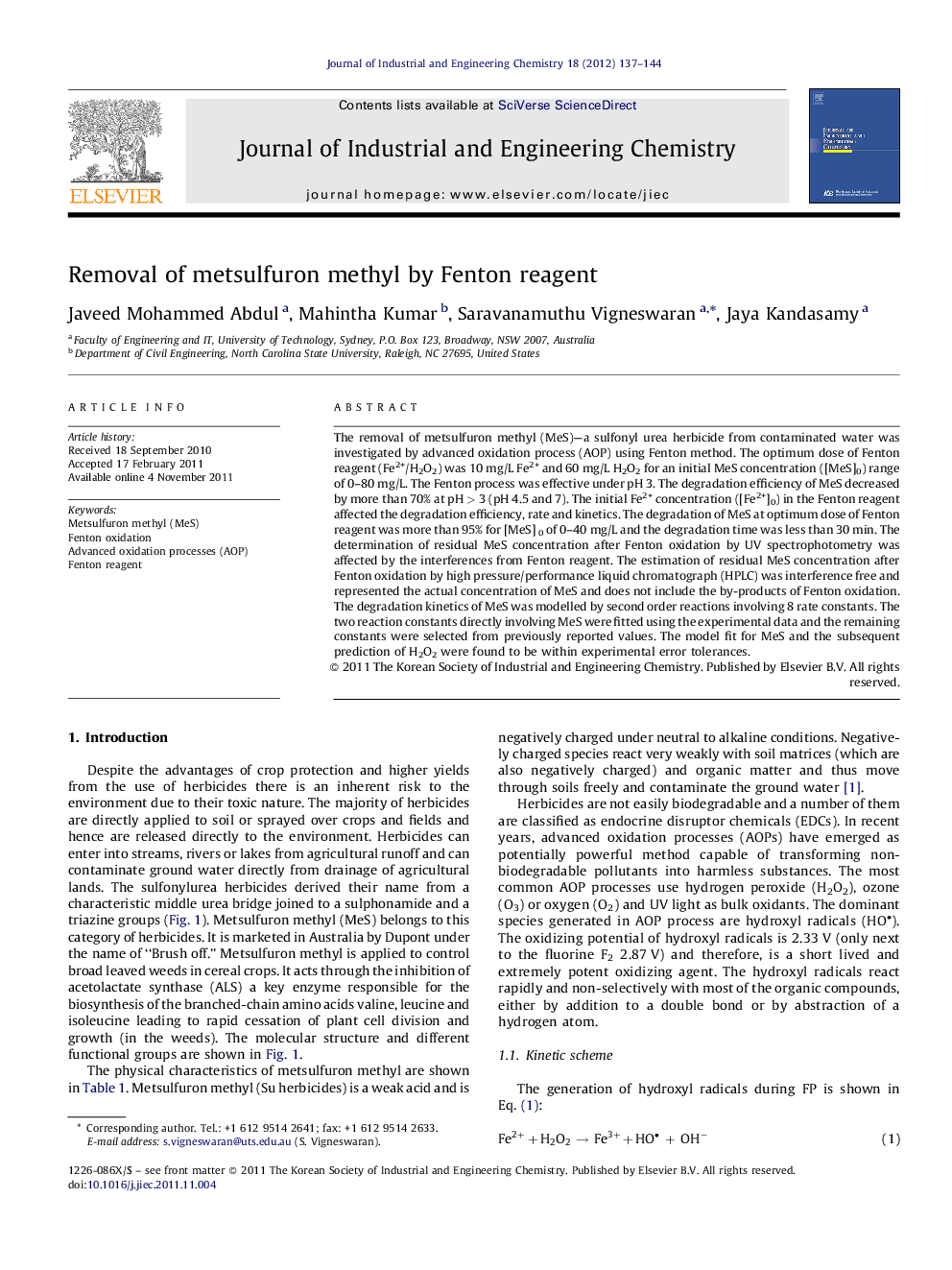| Article ID | Journal | Published Year | Pages | File Type |
|---|---|---|---|---|
| 228146 | Journal of Industrial and Engineering Chemistry | 2012 | 8 Pages |
The removal of metsulfuron methyl (MeS)—a sulfonyl urea herbicide from contaminated water was investigated by advanced oxidation process (AOP) using Fenton method. The optimum dose of Fenton reagent (Fe2+/H2O2) was 10 mg/L Fe2+ and 60 mg/L H2O2 for an initial MeS concentration ([MeS]0) range of 0–80 mg/L. The Fenton process was effective under pH 3. The degradation efficiency of MeS decreased by more than 70% at pH > 3 (pH 4.5 and 7). The initial Fe2+ concentration ([Fe2+]0) in the Fenton reagent affected the degradation efficiency, rate and kinetics. The degradation of MeS at optimum dose of Fenton reagent was more than 95% for [MeS] 0 of 0–40 mg/L and the degradation time was less than 30 min. The determination of residual MeS concentration after Fenton oxidation by UV spectrophotometry was affected by the interferences from Fenton reagent. The estimation of residual MeS concentration after Fenton oxidation by high pressure/performance liquid chromatograph (HPLC) was interference free and represented the actual concentration of MeS and does not include the by-products of Fenton oxidation. The degradation kinetics of MeS was modelled by second order reactions involving 8 rate constants. The two reaction constants directly involving MeS were fitted using the experimental data and the remaining constants were selected from previously reported values. The model fit for MeS and the subsequent prediction of H2O2 were found to be within experimental error tolerances.
